The First Images of Humans: Daguerre’s Legacy in Focus
In 1838, Louis Daguerre captured what would become the first photograph of a human being—a fleeting moment preserved on the Boulevard du Temple. A year earlier, in 1836, he experimented with the same pioneering process near Pont Neuf. Today, nearly two centuries later, I followed in Daguerre’s footsteps, visiting both locations to see how much of his Paris remains.
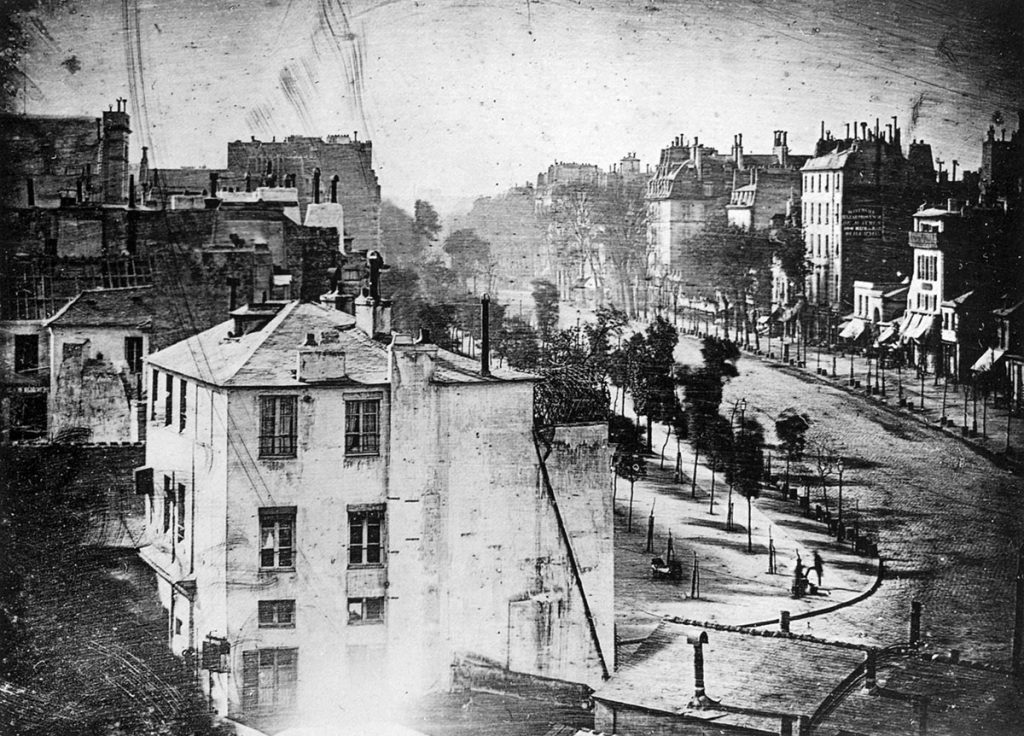
A glimpse of history on Boulevard du Temple: Louis Daguerre’s groundbreaking photograph from 1838 captures a solitary shoe shiner and his customer, the only figures still enough to appear in this first image of Parisian life. Photo Luis Daguerre
The Shoe Shine on Boulevard du Temple
One of the most famous early daguerreotypes is believed to have been taken in 1838 at the Boulevard du Temple in Paris. The image, primarily a streetscape, showcases a bustling thoroughfare with trees and buildings lining the boulevard. Due to the lengthy exposure—several minutes—the bustling traffic of pedestrians, carriages, and horses vanished from the frame, as their movement rendered them invisible.
Yet, in the bottom-right corner of the image, a single figure remains visible: a man receiving a shoe shine. The subject and the shoeshiner remained motionless long enough to leave a faint but discernible imprint on the photograph. This accidental inclusion of a human figure is often celebrated as the first photographic image of a human being.
While the identity of the man and the shoeshiner remains unknown, the image captures a moment of ordinary life in 19th-century Paris, immortalizing a fleeting interaction in a way that was previously unimaginable.
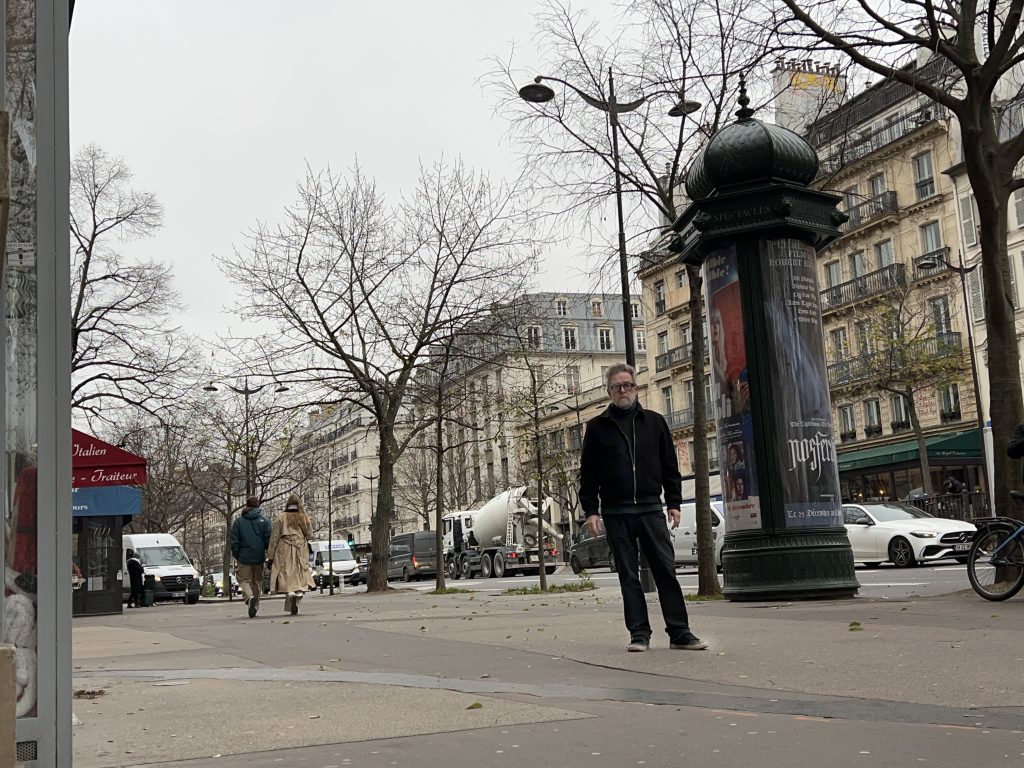
Yours truly standing in the exact spot where history froze a moment in 1838 — the site of the famous shoe shine on Boulevard du Temple, captured by Louis Daguerre.
Boulevard du Temple: A Scene Lost to Time
Daguerre’s famed image on the Boulevard du Temple was taken from a vantage point that no longer exists. The buildings where Daguerre positioned his camera—likely a high balcony or rooftop—are gone and have now been shaped into part of what today is Place de la République. The wide boulevard remains, but much has changed.
It’s difficult to align modern surroundings with Daguerre’s photograph, but one detail remains: a building to the left of me in the background can still be identified today. This fragment of continuity offers a small visual link to Daguerre’s Paris, even though much of the original setting has disappeared.
Standing there, I felt the gap between then and now. The precise perspective of Daguerre’s shot is lost, but the spirit of his scene lingers faintly in the stones and streets.
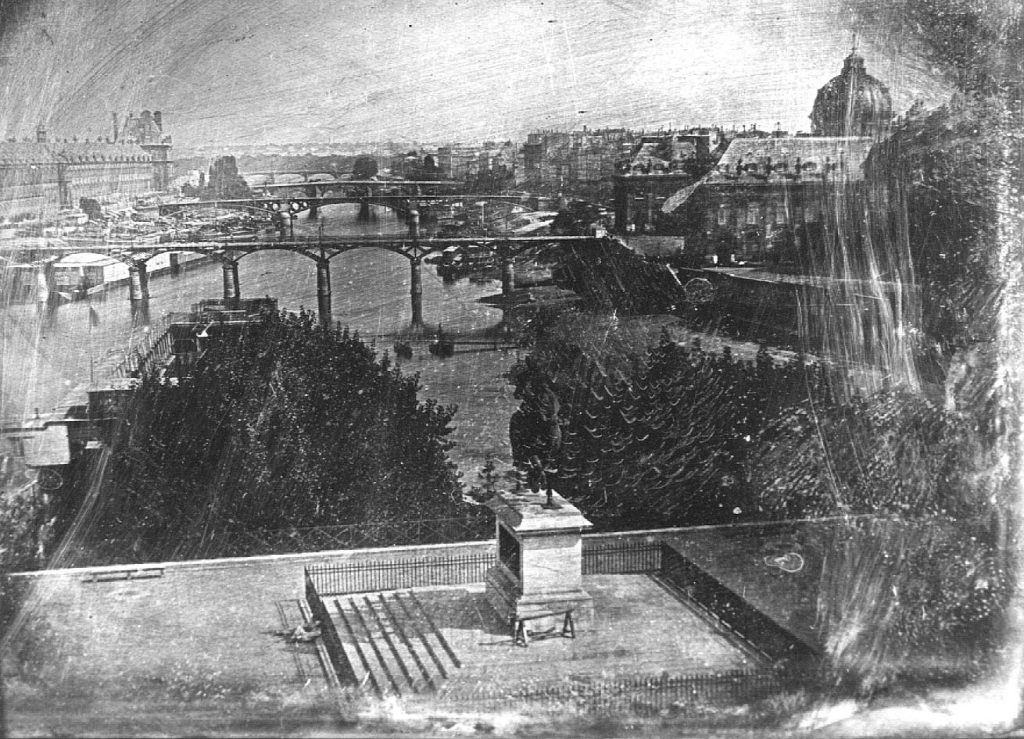
A fleeting moment on Pont Neuf: Workers captured in one of Daguerre’s early photographs, debated as one of the first images of human figures in history
Workers Resting on Pont Neuf
A less well-known but equally fascinating daguerreotype also lays claim to featuring the first human figures. This photograph, taken around the same period, depicts the Pont Neuf, the iconic bridge that spans the Seine in central Paris. Unlike the Boulevard du Temple image, this photograph captures a quieter scene, with two workers seated on the bridge, their outlines faint but visible.
The Pont Neuf daguerreotype highlights Daguerre’s technical achievement in rendering architectural details with remarkable clarity while subtly incorporating human presence. The image exemplifies the interplay between permanence and ephemerality—a theme central to early photography.
Though less celebrated than the Rue de Temple image, the Pont Neuf photograph reinforces Daguerre’s role as a chronicler of Parisian life. It underscores the city as both a setting and subject of his pioneering work.
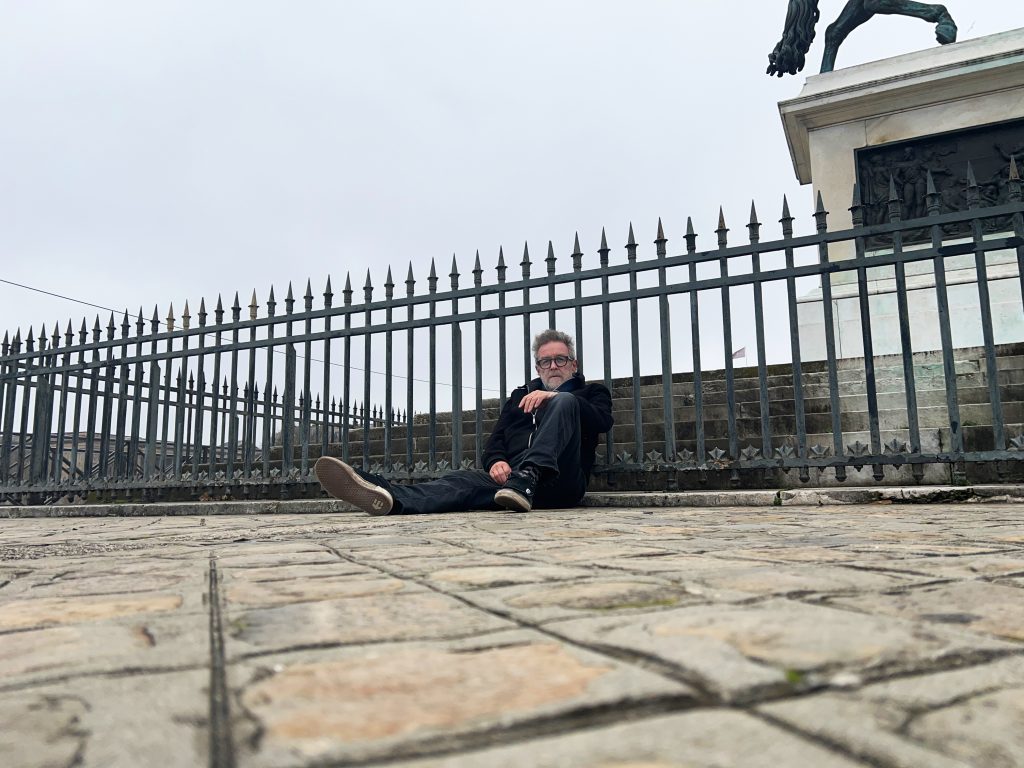
Yours truly, leaning against time: Resting my back on the same cast iron fence where Daguerre’s workers paused on Pont Neuf nearly two centuries ago.
Pont Neuf: An Unchanged Scene
The Pont Neuf scene from 1836 remains remarkably intact. Daguerre’s photograph shows two workers resting, their backs leaning against the cast-iron fence surrounding the statue of King Henri IV.
In my visit, I leaned against the same fence in the same spot, recreating their position. The buildings on the tip of Île de la Cité, where Daguerre set his camera, are still standing. I attempted to gain access to a rooftop or balcony to recreate his elevated view, but I wasn’t successful. From the ground, the river is no longer visible in the same way, but the bridge, the statue, and the fence remain unchanged.
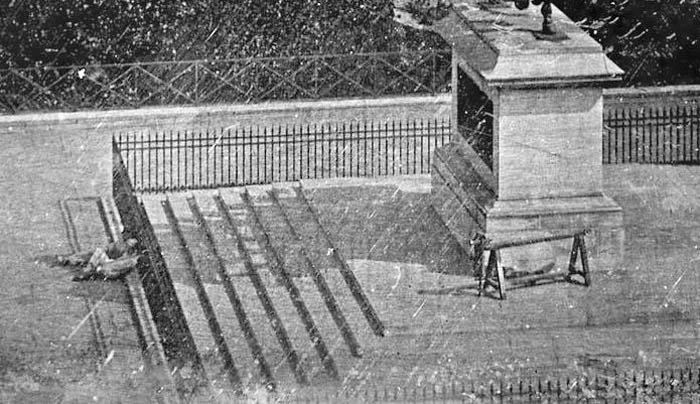
The two workers resting at the fence by the statue of Henri IV on Pont Neuf.
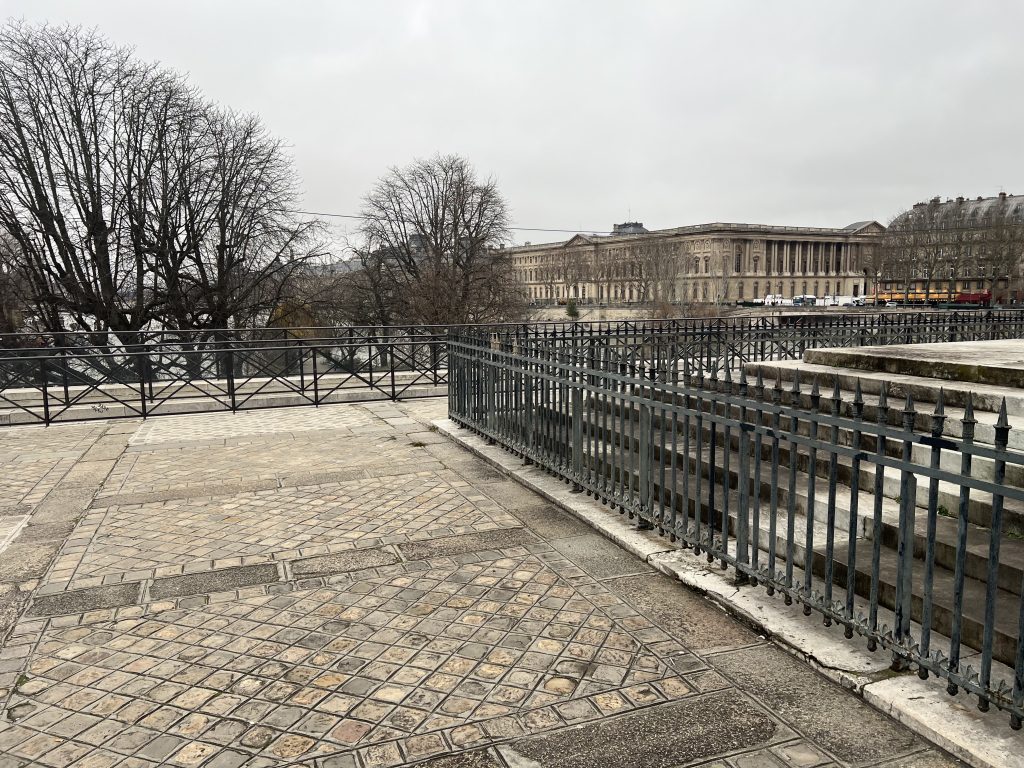
The location of the resting workers today (2024) Photo:Fredrik Hagblom
Historical Debate
The debate over which image deserves the title of “the first photograph of a human being” reflects broader questions about the role of photography in documenting reality. The Rue de Temple image is often given precedence due to the prominence of the shoe shine scene, which is easier to identify. However, the Pont Neuf daguerreotype, with its more understated depiction of human figures, offers an equally compelling narrative.
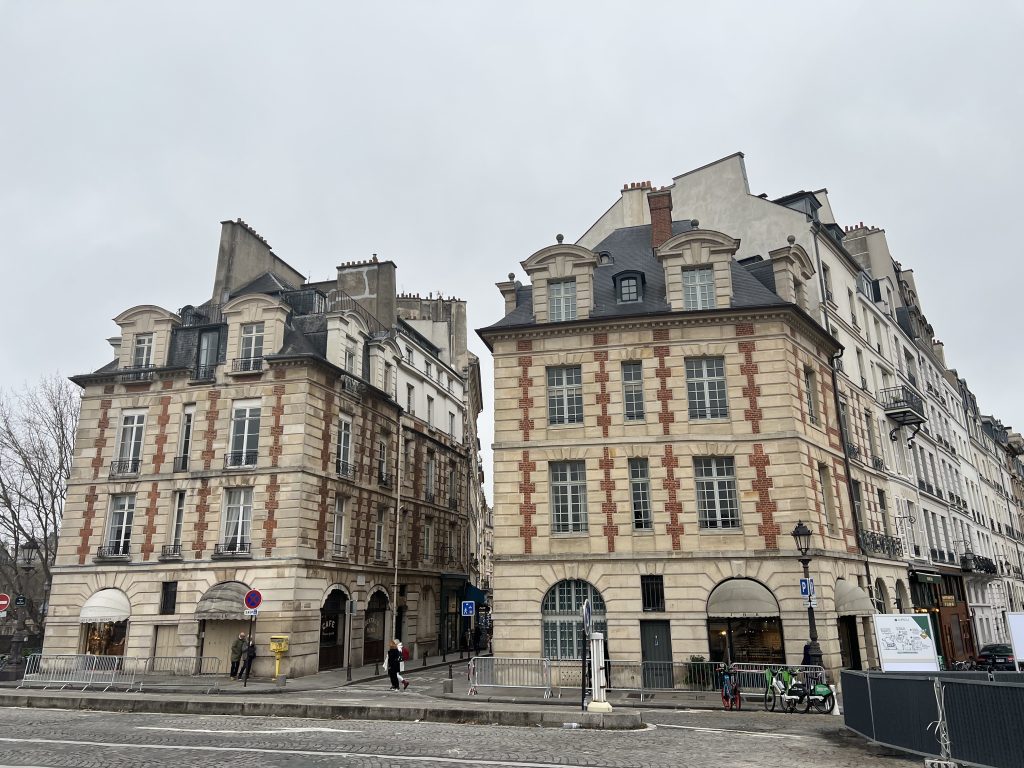
A view through time: The facade at the tip of Île de la Cité, where Louis Daguerre likely positioned his camera to capture the historic image of Pont Neuf. Photo: Fredrik Hagblom
A Journey Through Past and Present
Retracing Daguerre’s steps at these locations highlights the uneven imprint of history. Boulevard du Temple, once alive with theaters and activity, has evolved beyond recognition, while Pont Neuf stands as a testament to continuity. Together, these places reflect not only the birth of photography but also the ever-shifting relationship between permanence and change.
Louis Daguerre: A Pioneer of Photography
Born in 1787, Louis Daguerre was initially trained as a painter and stage designer, contributing to the development of the diorama, an immersive visual display popular in the early 19th century. His fascination with light and optics eventually led him to experiment with chemical processes to capture images permanently.
In collaboration with Joseph Nicéphore Niépce, Daguerre refined early photographic methods, culminating in the daguerreotype—a process that used a polished silver plate and chemical treatments to create highly detailed images. Officially announced in 1839, the daguerreotype was hailed as a technological marvel and quickly gained popularity.
Daguerre’s invention was revolutionary, yet its limitations were notable: long exposure times made capturing moving subjects nearly impossible. This challenge, however, inadvertently produced two iconic images that marked the dawn of photography’s ability to document humanity.
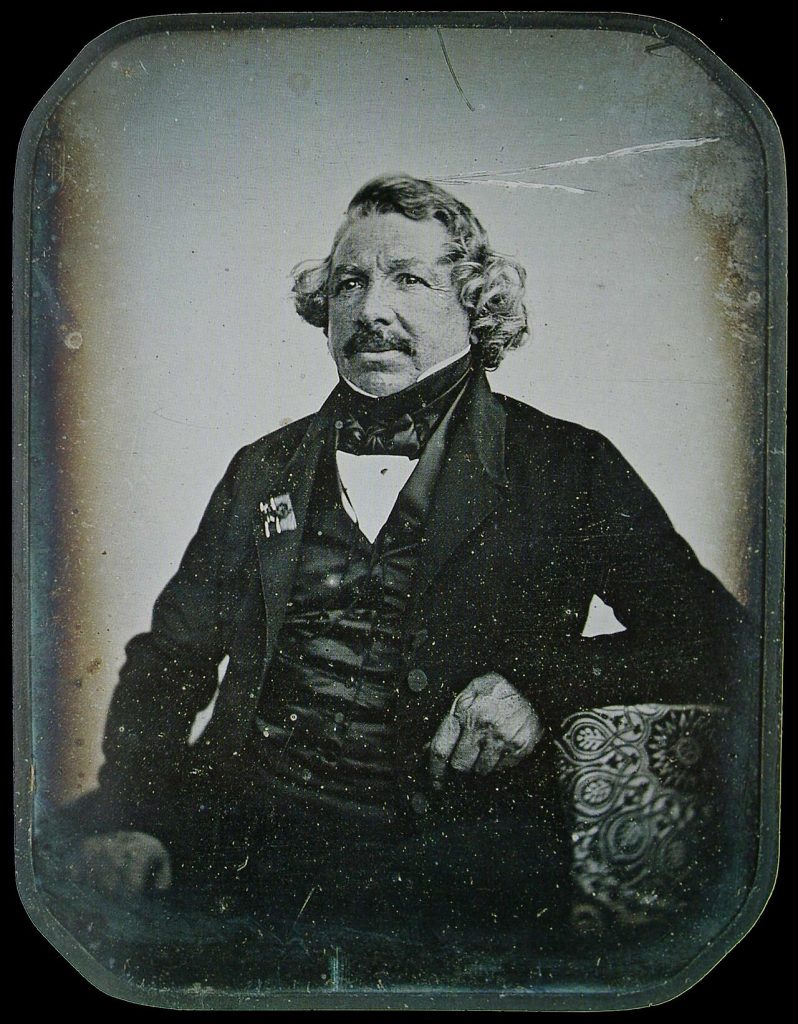
Louis Daguerre, the pioneer of photography, whose invention of the daguerreotype forever changed how we capture and preserve moments in time.
Daguerre’s Enduring Legacy
Louis Daguerre’s contributions to photography extend far beyond these two images. His work laid the foundation for a medium that would redefine art, journalism, and personal memory. Daguerreotypes became prized possessions, cherished for their clarity and permanence, and their influence is still evident in the world of photography today.
Daguerre himself enjoyed considerable recognition during his lifetime, though he retired shortly after unveiling his invention. He passed away in 1851, but his legacy endures as a pivotal figure in the history of visual technology.
The Rue de Temple and Pont Neuf images are emblematic of his achievements. They not only showcase the technical mastery of the daguerreotype but also mark the dawn of photography’s ability to document humanity. As viewers, we are reminded of the enduring power of images to connect us with the past, capturing fleeting moments that transcend time.
